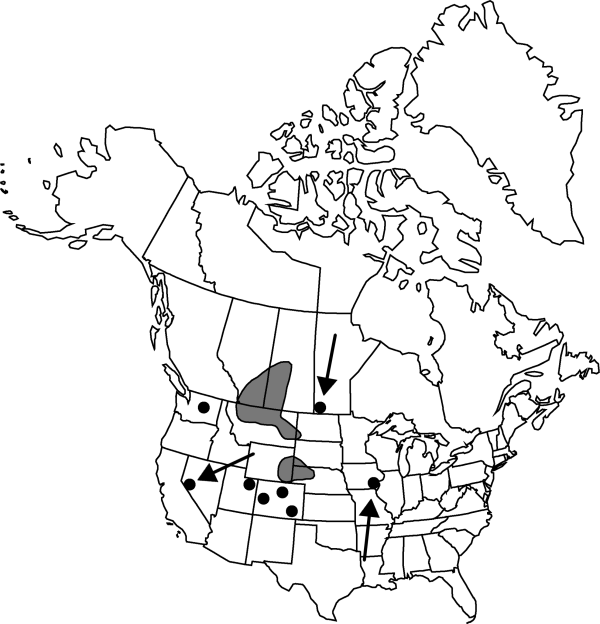Difference between revisions of "Chenopodium subglabrum"
Bot. Gaz. 34: 362. 1902.
FNA>Volume Importer |
imported>Volume Importer |
||
| (6 intermediate revisions by 2 users not shown) | |||
| Line 7: | Line 7: | ||
|year=1902 | |year=1902 | ||
}} | }} | ||
| − | |basionyms={{Treatment/ID/ | + | |special_status={{Treatment/ID/Special_status |
| + | |code=E | ||
| + | |label=Endemic | ||
| + | }} | ||
| + | |basionyms={{Treatment/ID/Basionym | ||
|name=Chenopodium leptophyllum var. subglabrum | |name=Chenopodium leptophyllum var. subglabrum | ||
|authority=S. Watson | |authority=S. Watson | ||
| + | |rank=variety | ||
| + | |publication_title=Proc. Amer. Acad. Arts | ||
| + | |publication_place=9: 95. 1874 | ||
}} | }} | ||
|synonyms= | |synonyms= | ||
| Line 34: | Line 41: | ||
-->{{#Taxon: | -->{{#Taxon: | ||
name=Chenopodium subglabrum | name=Chenopodium subglabrum | ||
| − | |||
|authority=(S. Watson) A. Nelson | |authority=(S. Watson) A. Nelson | ||
|rank=species | |rank=species | ||
| Line 48: | Line 54: | ||
|publication title=Bot. Gaz. | |publication title=Bot. Gaz. | ||
|publication year=1902 | |publication year=1902 | ||
| − | |special status= | + | |special status=Endemic |
| − | |source xml=https:// | + | |source xml=https://bitbucket.org/aafc-mbb/fna-data-curation/src/2e0870ddd59836b60bcf96646a41e87ea5a5943a/coarse_grained_fna_xml/V4/V4_544.xml |
|genus=Chenopodium | |genus=Chenopodium | ||
|subgenus=Chenopodium subg. Chenopodium | |subgenus=Chenopodium subg. Chenopodium | ||
Latest revision as of 21:59, 5 November 2020
Stems erect or semierect, branched, 1–5.5 dm, glabrous or sparsely farinose. Leaves nonaromatic; petiole to 1 cm; blade linear, 1-veined, 1–3(–5) × 0.1–0.2(–0.4) cm, somewhat fleshy, base cuneate, margins entire, apex acute to acuminate, glabrous. Inflorescences glomerules in terminal and axillary panicles, 6–25 × 5–20 cm, widely spaced, maturing at different times; bracts variable. Flowers: perianth segments 5, connate into 0.3–0.4 mm tube; lobes ovate or orbicular-obovate, 1–1.4 mm, apex obtuse or rounded, cucullate, carinate, sparsely farinose, largely covering fruit at maturity; stamens 5; stigmas 2, 0.1 mm. Achenes ovoid; pericarp nonadherent, smooth. Seeds ovoid, 1.2–1.6 mm diam., margins obtuse with narrow rim; seed coat black, smooth, shiny. 2n = 18.
Phenology: Fruiting mid summer–fall.
Habitat: Sandy areas, particularly sand bars in rivers and in sandy blowouts near river banks
Elevation: 400-1400 m
Distribution

Alta., Man., Sask., Colo., Iowa, Mont., Nebr., Nev., N.Dak., S.Dak., Utah, Wash., Wyo.
Discussion
Selected References
None.